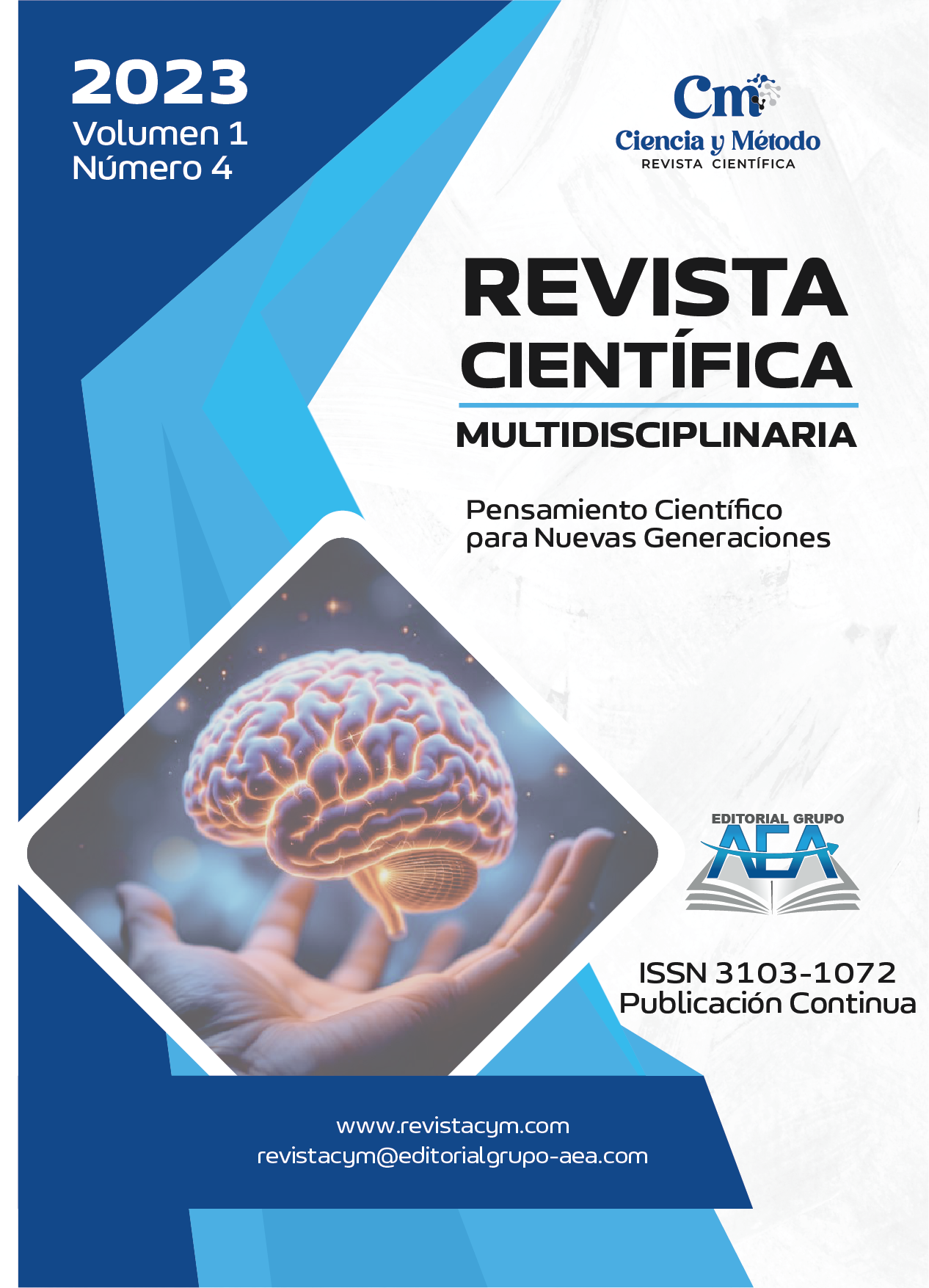Uso de computación cuántica en la mejora de algoritmos de aprendizaje automático
Contenido principal del artículo
Resumen
Este estudio explora la integración de la computación cuántica en la mejora de algoritmos de aprendizaje automático, destacando su potencial para superar las limitaciones computacionales de los métodos clásicos en tareas de alta complejidad. A través de una revisión bibliográfica sistemática con enfoque cualitativo, se analizaron artículos académicos indexados entre 2015 y 2023, identificando avances clave en algoritmos cuánticos variacionales, máquinas de vectores soporte cuánticas y redes neuronales cuánticas. Los hallazgos revelan que, pese a restricciones tecnológicas actuales, estos enfoques muestran ventajas en eficiencia, representatividad y capacidad de generalización. Además, se subraya la relevancia de los modelos híbridos cuántico-clásicos como solución intermedia, al permitir una distribución funcional entre recursos cuánticos y clásicos. La investigación concluye que esta convergencia representa una vía prometedora para el desarrollo de inteligencia artificial avanzada, aunque persisten desafíos como la optimización de circuitos, la mitigación del ruido y la estandarización metodológica. Se enfatiza la necesidad de fortalecer la infraestructura tecnológica y teórica para consolidar esta línea de innovación computacional.
##plugins.themes.bootstrap3.displayStats.downloads##
Detalles del artículo
Sección

Esta obra está bajo una licencia internacional Creative Commons Atribución-NoComercial 4.0.
Cómo citar
Referencias
Abbas, A., Sutter, D., Zoufal, C., Lucchi, A., Figalli, A., & Woerner, S. (2021). The power of quantum neural networks. Nature Computational Science, 1(6), 403–409. https://doi.org/10.1038/s43588-021-00084-1 DOI: https://doi.org/10.1038/s43588-021-00084-1
Arute, F., Arya, K., Babbush, R., Bacon, D., Bardin, J. C., Barends, R., ... & Martinis, J. M. (2019). Quantum supremacy using a programmable superconducting processor. Nature, 574(7779), 505–510. https://doi.org/10.1038/s41586-019-1666-5 DOI: https://doi.org/10.1038/s41586-019-1666-5
Beer, K., Bondarenko, D., Farrelly, T. et al. (2020). Training deep quantum neural networks. Nat Commun 11, 808. https://doi.org/10.1038/s41467-020-14454-2 DOI: https://doi.org/10.1038/s41467-020-14454-2
Biamonte, J., Wittek, P., Pancotti, N., Rebentrost, P., Wiebe, N., & Lloyd, S. (2017). Quantum machine learning. Nature, 549(7671), 195–202. https://doi.org/10.1038/nature23474 DOI: https://doi.org/10.1038/nature23474
Cerezo, M., Arrasmith, A., Babbush, R., Benjamin, S. C., Endo, S., Fujii, K., ... & Coles, P. J. (2021). Variational quantum algorithms. Nature Reviews Physics, 3(9), 625–644. https://doi.org/10.1038/s42254-021-00348-9
Cerezo, M., Arrasmith, A., Babbush, R., Benjamin, S. C., Endo, S., Fujii, K., ... & Coles, P. J. (2021). Variational quantum algorithms. Nature Reviews Physics, 3(9), 625–644. https://doi.org/10.1038/s42254-021-00348-9 DOI: https://doi.org/10.1038/s42254-021-00348-9
Chen, M., Li, G., Lin, H., & Huang, J. (2021). Hybrid quantum-classical neural network for histopathological image classification. IEEE Access, 9, 146508–146517.
Cong, I., Choi, S., & Lukin, M. D. (2019). Quantum convolutional neural networks. Nature Physics, 15(12), 1273–1278. https://doi.org/10.1038/s41567-019-0648-8 DOI: https://doi.org/10.1038/s41567-019-0648-8
Farhi, E., & Neven, H. (2018). Classification with quantum neural networks on near term processors. arXiv preprint arXiv:1802.06002. https://doi.org/10.48550/arXiv.1802.06002
Gacon, J., Zoufal, C., & Woerner, S. (2021). Simultaneous perturbation stochastic approximation of the quantum natural gradient. Quantum, 5, 567. DOI: https://doi.org/10.22331/q-2021-10-20-567
Grant, E., Wossnig, L., Ostaszewski, M., & Benedetti, M. (2019). An initialization strategy for addressing barren plateaus in parametrized quantum circuits. Quantum, 3, 214. https://doi.org/10.22331/q-2019-12-09-214 DOI: https://doi.org/10.22331/q-2019-12-09-214
Havlíček, V., Córcoles, A. D., Temme, K., Harrow, A. W., Kandala, A., Chow, J. M., & Gambetta, J. M. (2019). Supervised learning with quantum-enhanced feature spaces. Nature, 567(7747), 209–212. https://doi.org/10.1038/s41586-019-0980-2 DOI: https://doi.org/10.1038/s41586-019-0980-2
Huang, H. Y., Broughton, M., Mohseni, M., Babbush, R., Boixo, S., Neven, H., & McClean, J. R. (2021). Power of data in quantum machine learning. Nature Communications, 12(1), 2631. https://doi.org/10.1038/s41467-021-22539-9 DOI: https://doi.org/10.1038/s41467-021-22539-9
McClean, J. R., Boixo, S., Smelyanskiy, V. N., Babbush, R., & Neven, H. (2018). Barren plateaus in quantum neural network training landscapes. Nature Communications, 9(1), 4812. https://doi.org/10.1038/s41467-018-07090-4 DOI: https://doi.org/10.1038/s41467-018-07090-4
Mitarai, K., Negoro, M., Kitagawa, M., & Fujii, K. (2018). Quantum circuit learning. Physical Review A, 98(3), 032309. https://doi.org/10.1103/PhysRevA.98.032309 DOI: https://doi.org/10.1103/PhysRevA.98.032309
Peruzzo, A., McClean, J., Shadbolt, P., Yung, M. H., Zhou, X. Q., Love, P. J., ... & O’Brien, J. L. (2014). A variational eigenvalue solver on a photonic quantum processor. Nature Communications, 5, 4213. https://doi.org/10.1038/ncomms5213 DOI: https://doi.org/10.1038/ncomms5213
Preskill, J. (2018). Quantum Computing in the NISQ era and beyond. Quantum, 2, 79. https://doi.org/10.22331/q-2018-08-06-79 DOI: https://doi.org/10.22331/q-2018-08-06-79
Schuld, M., & Killoran, N. (2019). Quantum machine learning in feature Hilbert spaces. Physical Review Letters, 122(4), 040504. https://doi.org/10.1103/PhysRevLett.122.040504 DOI: https://doi.org/10.1103/PhysRevLett.122.040504
Stokes, J., Izaac, J., Killoran, N., & Carleo, G. (2020). Quantum natural gradient. Quantum, 4, 269. https://doi.org/10.22331/q-2020-05-25-269 DOI: https://doi.org/10.22331/q-2020-05-25-269
Strubell, E., Ganesh, A., & McCallum, A. (2019). Energy and policy considerations for deep learning in NLP. Proceedings of the 57th Annual Meeting of the Association for Computational Linguistics, 3645–3650. https://doi.org/10.18653/v1/P19-1355 DOI: https://doi.org/10.18653/v1/P19-1355





